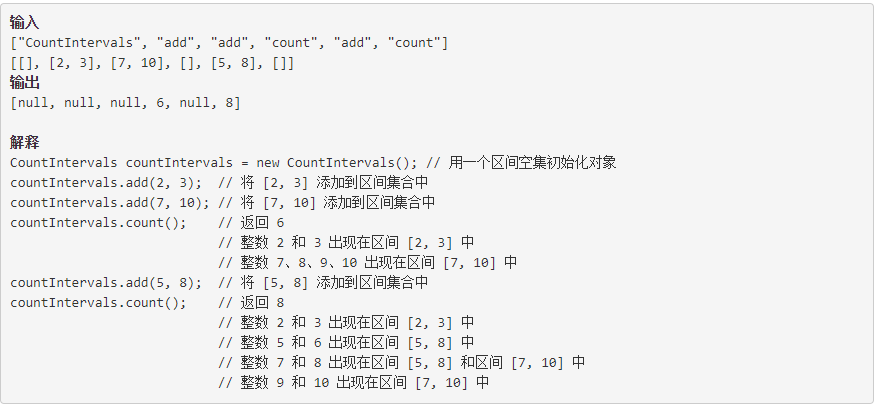
泪目,刷新最好排名,第一次拿到Leetcode的奖品
5234. 移除字母异位词后的结果数组
给你一个下标从 0 开始的字符串 words ,其中 words[i] 由小写英文字符组成。
在一步操作中,需要选出任一下标 i ,从 words 中 删除 words[i] 。其中下标 i 需要同时满足下述两个条件:
- 0 < i < words.length
- words[i - 1] 和 words[i] 是 字母异位词 。
只要可以选出满足条件的下标,就一直执行这个操作。
在执行所有操作后,返回 words 。可以证明,按任意顺序为每步操作选择下标都会得到相同的结果。
字母异位词 是由重新排列源单词的字母得到的一个新单词,所有源单词中的字母通常恰好只用一次。例如,”dacb” 是 “abdc” 的一个字母异位词。
示例 1:
输入:words = [“abba”,”baba”,”bbaa”,”cd”,”cd”] 输出:[“abba”,”cd”] 解释: 获取结果数组的方法之一是执行下述步骤: - 由于 words[2] = “bbaa” 和 words[1] = “baba” 是字母异位词,选择下标 2 并删除 words[2] 。 现在 words = [“abba”,”baba”,”cd”,”cd”] 。 - 由于 words[1] = “baba” 和 words[0] = “abba” 是字母异位词,选择下标 1 并删除 words[1] 。 现在 words = [“abba”,”cd”,”cd”] 。 - 由于 words[2] = “cd” 和 words[1] = “cd” 是字母异位词,选择下标 2 并删除 words[2] 。 现在 words = [“abba”,”cd”] 。 无法再执行任何操作,所以 [“abba”,”cd”] 是最终答案。
示例 2:
输入:words = [“a”,”b”,”c”,”d”,”e”] 输出:[“a”,”b”,”c”,”d”,”e”] 解释: words 中不存在互为字母异位词的两个相邻字符串,所以无需执行任何操作。
提示:
- 1 <= words.length <= 100
- 1 <= words[i].length <= 10
- words[i] 由小写英文字母组成
思路:
模拟
class Solution {public List<String> removeAnagrams(String[] words) {List<String> res = new ArrayList<>();for (String s : words) {if (!res.isEmpty()) {String t = res.get(res.size() - 1);if (!check(s, t)) {res.add(s);}} else {res.add(s);}}return res;}boolean check(String s, String t) {if (s.length() != t.length())return false;char[] c1 = s.toCharArray();char[] c2 = t.toCharArray();Arrays.sort(c1);Arrays.sort(c2);for (int i = 0; i < c1.length; i++)if (c1[i] != c2[i])return false;return true;}}
6064. 不含特殊楼层的最大连续楼层数
Alice 管理着一家公司,并租用大楼的部分楼层作为办公空间。Alice 决定将一些楼层作为 特殊楼层 ,仅用于放松。
给你两个整数 bottom 和 top ,表示 Alice 租用了从 bottom 到 top(含 bottom 和 top 在内)的所有楼层。另给你一个整数数组 special ,其中 special[i] 表示 Alice 指定用于放松的特殊楼层。
返回不含特殊楼层的 最大 连续楼层数。
示例 1:
输入:bottom = 2, top = 9, special = [4,6] 输出:3 解释:下面列出的是不含特殊楼层的连续楼层范围: - (2, 3) ,楼层数为 2 。 - (5, 5) ,楼层数为 1 。 - (7, 9) ,楼层数为 3 。 因此,返回最大连续楼层数 3 。
示例 2:
输入:bottom = 6, top = 8, special = [7,6,8] 输出:0 解释:每层楼都被规划为特殊楼层,所以返回 0 。
提示
- 1 <= special.length <= 105
- 1 <= bottom <= special[i] <= top <= 109
- special 中的所有值 互不相同
思路:
模拟
class Solution {public int maxConsecutive(int bottom, int top, int[] special) {Arrays.sort(special);int pre = bottom - 1;int max = 0;for (int x : special) {max = Math.max(max, x - pre - 1);pre = x;}max = Math.max(max, top - pre);return max;}}
6065. 按位与结果大于零的最长组合
对数组 nums 执行 按位与 相当于对数组 nums 中的所有整数执行 按位与 。
- 例如,对 nums = [1, 5, 3] 来说,按位与等于 1 & 5 & 3 = 1 。
- 同样,对 nums = [7] 而言,按位与等于 7 。
给你一个正整数数组 candidates 。计算 candidates 中的数字每种组合下 按位与 的结果。 candidates 中的每个数字在每种组合中只能使用 一次 。
返回按位与结果大于 0 的 最长 组合的长度。
示例 1:
输入:candidates = [16,17,71,62,12,24,14] 输出:4 解释:组合 [16,17,62,24] 的按位与结果是 16 & 17 & 62 & 24 = 16 > 0 。 组合长度是 4 。 可以证明不存在按位与结果大于 0 且长度大于 4 的组合。 注意,符合长度最大的组合可能不止一种。 例如,组合 [62,12,24,14] 的按位与结果是 62 & 12 & 24 & 14 = 8 > 0 。
示例 2:
输入:candidates = [8,8] 输出:2 解释:最长组合是 [8,8] ,按位与结果 8 & 8 = 8 > 0 。 组合长度是 2 ,所以返回 2 。
提示:
- 1 <= candidates.length <= 105
- 1 <= candidates[i] <= 107
思路:
按位运算
class Solution {public int largestCombination(int[] c) {int max = 0;for (int i = 0; i < 24; i++) {int cnt = 0;for (int x : c)cnt += x >> i & 1;max = Math.max(max, cnt);}return max;}}
6066. 统计区间中的整数数目
给你区间的 空 集,请你设计并实现满足要求的数据结构:
- 新增:添加一个区间到这个区间集合中。
- 统计:计算出现在 至少一个 区间中的整数个数。
实现 CountIntervals 类:
- CountIntervals() 使用区间的空集初始化对象
- void add(int left, int right) 添加区间 [left, right] 到区间集合之中。
- int count() 返回出现在 至少一个 区间中的整数个数。
注意:区间 [left, right] 表示满足 left <= x <= right 的所有整数 x 。
示例 1:
提示:
- 1 <= left <= right <= 109
- 最多调用 add 和 count 方法 总计 105 次
- 调用 count 方法至少一次
思路:
区间问题
方法1:有序集和(平衡树)
分析时间复杂度:考虑每一个区间,只会被添加一次,删除一次,所以总时间复杂度为O(nlogn)
方法2:动态开点线段树
class CountIntervals {class Interval implements Comparable<Interval> {int l, r;Interval(int l, int r) {this.l = l;this.r = r;}public int compareTo(Interval other) {return this.r - other.r;}}TreeSet<Interval> set = new TreeSet<>();int cnt = 0;public CountIntervals() {}public void add(int left, int right) {var iterator = set.tailSet(new Interval(left, left)).iterator();while (iterator.hasNext()) {var t = iterator.next();if (t.l > right) break;left = Math.min(left, t.l);right = Math.max(right, t.r);cnt -= t.r - t.l + 1;iterator.remove();}set.add(new Interval(left, right));cnt += right - left + 1;}public int count() {return cnt;}}/*** Your CountIntervals object will be instantiated and called as such:* CountIntervals obj = new CountIntervals();* obj.add(left,right);* int param_2 = obj.count();*/
class CountIntervals {class Interval {Interval left, right;int l, r;int sum;Interval(int l, int r) {this.l = l;this.r = r;}void add(int ll, int rr) {if (r - l + 1 == sum) return;if (ll <= l && rr >= r) {sum = r - l + 1;} else {int mid = l + r >> 1;if (left == null) left = new Interval(l, mid);if (right == null) right = new Interval(mid + 1, r);if (ll <= mid) left.add(ll, rr);if (rr > mid) right.add(ll, rr);sum = left.sum + right.sum;}}}Interval root = new Interval(1, (int)(1e9));public CountIntervals() {}public void add(int left, int right) {root.add(left, right);}public int count() {return root.sum;}}/*** Your CountIntervals object will be instantiated and called as such:* CountIntervals obj = new CountIntervals();* obj.add(left,right);* int param_2 = obj.count();*/

